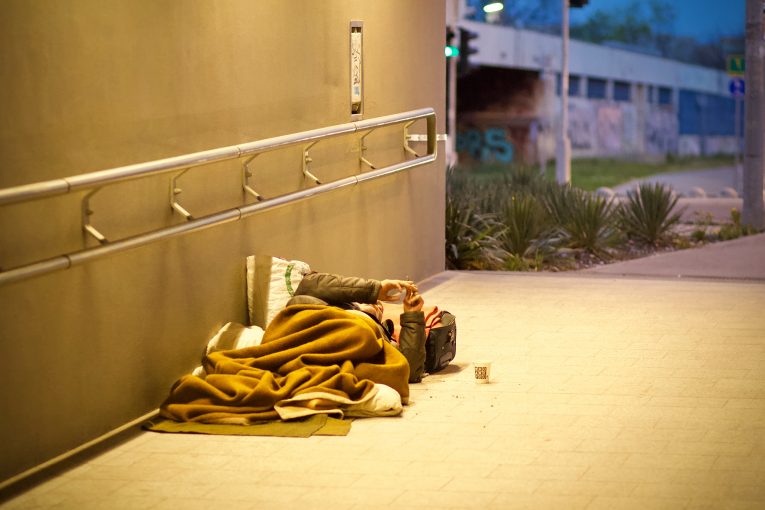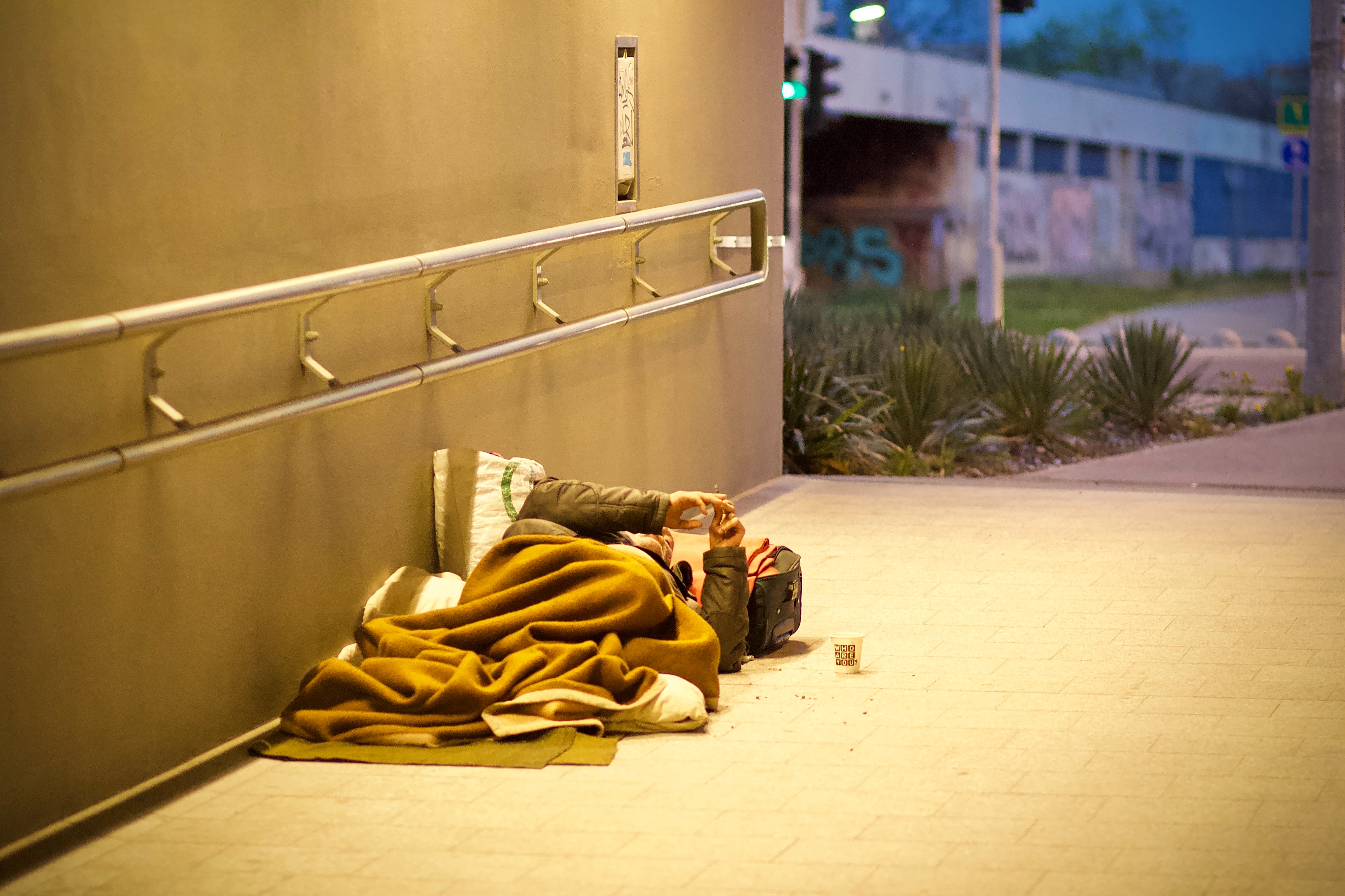

By Davis M. Greenwald
People often ask me how it is I focus on issues such as housing and land use on the one hand and criminal justice reform on the other. The basic answer is that the two are actually tightly linked.
Housing insecurity is a huge driver of a variety of criminal conduct and a huge impediment to avoiding recidivism on the back end.
This point was driven home a few weeks ago when I interviewed Kara Chien of the San Francisco Public Defender’s Office on the problems with CARE Court. Suddenly we were talking about the need for affordable housing in order to get people out of homelessness.
Human Rights Watch opposed the program, noting, “It does not add resources to develop permanent safe and supportive housing, critical to helping unhoused people with mental health conditions get off the streets.”
“The CARE Court program creates a pathway into involuntary services and treatment for people with mental illness, which will include many people experiencing homelessness, but misses an opportunity to provide more resources for the vast majority of people experiencing homelessness  who are actively seeking housing and services,” said Ann Oliva, CEO of the National Alliance to End Homelessness. “It is not aligned with the evidence for ending homelessness and serving people with mental illness, and distracts focus from addressing known resource gaps.”
who are actively seeking housing and services,” said Ann Oliva, CEO of the National Alliance to End Homelessness. “It is not aligned with the evidence for ending homelessness and serving people with mental illness, and distracts focus from addressing known resource gaps.”
Indeed, as they pointed out: “The consensus among academics, practitioners, and people with lived expertise of homelessness is clear: the most effective way to end homelessness is to rapidly connect people to an array of housing options, with the ability to voluntarily engage in the supportive services that people need, be they in behavioral health, employment, substance use, mental health, or other services.”
When we look at recidivism we once again need to start with stable housing and then supportive services, including mental health treatment, substance abuse treatment and, of course, job training and education.
Think about it. Ninety-five percent of all people who are sentenced to time in jails and prisons will one day be released back to the community. We want those people to be able to integrate back into society, get jobs, get housing and stay out of trouble.
And yet, we make that impossible. We deny housing to people who have been formerly incarcerated, we make them check boxes that makes it impossible for them to get jobs, and then we are shocked when they resort to illegal means to make ends meet and go back into old habits such as drugs and gangs.
The HUD site notes, “Stable housing is the foundation for successful reentry from prisons and jails and to public safety.”
In June 2021 Marcia Fudge, HUD Secretary noted, “Among my priorities at the U.S. Department of Housing and Urban Development (HUD) is to ensure the public safety of the households, the properties, and the communities that we assist. One of the most important ways that HUD can meet this priority is to ensure that people leaving prisons and jails are supported in their reentry to the community. Research also shows that people who lack stable housing following incarceration face a higher likelihood of rearrest and reincarceration. On the other hand, a stable home can serve as the foundation upon which returning citizens can rebuild their lives, obtain employment, improve their health, and achieve recovery.
“Unfortunately, too many people exit prisons and jails in America without a stable home to return to. A significant number of people experiencing homelessness are caught in a revolving door between homelessness and reincarceration.”
The reality as Fudge pointed out in April 2022: “[I]ndividuals with criminal histories too often face daunting and unnecessary barriers to obtaining and maintaining housing, including public housing… which are often the only types of housing they can afford.”
According to the Prison Policy Initiative, 570 out of every 10,000 formerly incarcerated people in the United States experience some form of housing insecurity, varying from sleeping on the streets to forms of marginal homelessness (i.e. staying in motels or rooming houses). This rate is nearly 10 times higher than that of the general population.
Without secure and stable housing, formerly incarcerated people have less access to physical and mental health care, job opportunities and stability, and educational programs, which can lead to higher rates of recidivism. In fact, studies in Cleveland and Chicago demonstrate that formerly incarcerated people who were able to obtain stable housing within the first month of release had lower rates of re-incarceration.
The Urban Institute initiative in 2019 noted, “Because housing problems are often a key underlying factor for people’s involvement with the criminal justice system, there are ways housing interventions can help lessen criminal justice involvement. Decriminalizing homelessness, for example, can reduce rates of initial arrest and incarceration, especially for people with low-level, nonviolent offenses. A sufficient supply of affordable housing and supportive services could help people stabilize after their release from jail and reduce the likelihood of recidivism. “
They added, “Research shows that families living in high-poverty areas are more likely to be associated with crime-related activity, either as a victim, as a witness, or as the person accused or arrested. Although there may be other neighborhood variables, such as unemployment and peer influences, exposure to the risk of being either a person who commits a crime or a victim is high. When people are stably housed, they have fewer recorded non-violent offenses.”
The key variable here on both sides of this equation is stable housing. Stable housing will not solve all of the problems, but it becomes the baseline to begin to get people back on the right track. That’s why Housing First focuses on getting people into stable housing first, before getting them treatment.







I’ve always heard that it was schools which caused people to go to prison (the “school-to-prison pipeline”). 🙂
I heard it was right-wing ideology to that caused people to to go prison (the “GOP-to prison pipeline”)
This article primarily discusses the difficulties that convicts face AFTER getting out of prison.
Not much analysis regarding whether or not they had housing BEFORE going to prison.
Public housing projects, for example, provide housing – but also seem to foster crime. You’d be safer passing by most outdoor homeless encampments, vs. passing by some public housing projects.
Maybe this is better-described as the “public-housing-to-prison pipeline”.
I’d suggest that lack of housing has very little to do with most crime.
I focused mainly on the link between housing insecurity and recidivism.
But there is also a link between housing instability and becoming justice involved…
From the Urban Institute: “Research has shown that severe housing instability, in the form of chronic homelessness, can increase a person’s risk of becoming involved with the justice system because many behaviors associated with homelessness—such as sleeping, sitting, and asking for money or resources in public spaces—have been criminalized. Nationally, researchers have found that someone in jail is between 7.5 and 11.3 times more likely to have been homeless than someone with no history of jail incarceration.”
These aren’t the type of “crimes” that most people are very concerned about.
I strongly suspect that the types of crime that cause the most concern are committed by “housed” people.
“These aren’t the type of “crimes” that most people are very concerned about.”
You’re missing a critical point – once you get into the system, it becomes a revolving door – even if the types of crimes are not the ones people are concerned about or worse yet, technical violations lead to incarceration as well.
The implication in the article is that homelessness was the “reason” for the original crime which landed them in prison.
Again, I don’t believe that most individuals in prison were homeless at the time that they committed the first crime that landed them in prison.
As such, homelessness is not the original reason for their incarceration.
It might be more accurate to state that their crime “caused” their homelessness, AFTER release from prison.
“The implication in the article is that homelessness was the “reason” for the original crime which landed them in prison.”
That’s not accurate. The implication of the research is that there is a link between housing insecurity and in particular recidivism.
Actually, it’s not even addressed in the article. Therefore, I’m assuming that it hasn’t been “researched”, either.
When looking at “who” commits the type of crime that most people are concerned about, they don’t appear to be what one has in mind regarding a homeless person.
(Young males, with clean clothing for example. Driving cars, etc.) Not exactly “homeless”. And certainly a lot-better off than many homeless people.
Now, they might “end up” homeless when they’re released from prison, partly because their own families can’t (or won’t) help support them. But homelessness did not “cause” their initial crime (and likely wasn’t even a factor – since they probably had homes at the time), just as the school system didn’t cause them to do so (despite my earlier joke).
Again, go back to my initial comment regarding public housing, for example.
I believe this is my fifth comment for the day.
Maybe you can clarify your point here, I’m not following you here.
If you want to allow a 6th comment, I’ll do so – but it’s getting kind of repetitive.
Again, if you look at who is in prison, ask them if they were homeless at the time that they committed the first crime which landed them in prison.
I suspect that the percentage who were homeless at that time is exceedingly-low.
Thank you for clarifying that. That was not the thrust of the article. There is research on it, but the article focused on the link between housing insecurity and recidivism.